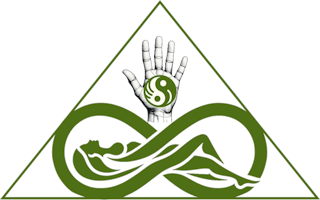The concept of tensegrity within a living form, produced by tensional forces between ridged and pliable structures, resembles the tensegrity model that has been illustrated through architectures and sculptures. A tensegrity model relies on localised areas of compression that are connected, unit wide by tensile force. Ridged structures, surrounded by the continuous tensional forces of pliable structures, appear to float within the construction (Fuller, 1975, as cited in Hohenschurz-Schmidt, Esteves, & Thomson, 2016). The human body offers a biomechanical example, combining rigid structures (bones) and tensioned elements (connective tissue) that form a stable arrangement with global tensional connections. (Hohenschurz-Schmidt, Esteves, & Thomson, 2016).
Hohenschurz-Schmidt et al., (2016) introduces the tensegrity concept in relation to non-living structures and indicates the possibility of the small step of those same principals applying to a living form. The participant’s concept relating to the living body generally matched the author’s introduction and all agreed that tensegrity relies on areas of compression connected via continuous tension. However the participants demonstrated a strong belief that tensegrity did indeed apply to multiple levels of the living body, while the authors expressed caution and suggests that the evidence is mostly conceptual requiring robust appraisal for clinical application (Hohenschurz-Schmidt et al., 2016).
The implications of tensegrity applying to the human body, for manual therapies, are far reaching and would underpin an understanding that goes beyond the traditional views of gross anatomy and human mechanics. The model has the potential to help explain what practitioners observe and palpate during patient assessments and guide practitioner’s choice of appropriate treatment as well as advice given to patients. In part this is because the practitioner includes an understanding that external forces applied to a tensegrity structure will be conveyed throughout the whole structure affecting all components (Hohenschurz-Schmidt et al., 2016).
The patterns of movement, dysfunction and tension that are observable and palpable in the body, (understood as a tensegrity model) could help practitioners in their understanding of the human musculoskeletal system (Hohenschurz-Schmidt et al., 2016). Hence this study indicates that the practice of manual therapy may potentially be improved by including the application of tensegrity to a biomechanical model. Hohenschurz-Schmidt et al., (2016) propose that tensegrity principals should be taught early on in courses for manual therapists to better inform their clinical decisions and perceptions of the human body. The authors also suggests that qualitative studies within a clinical setting can continue to develop the model. However, Hohenschurz-Schmidt et al., (2016) warn that high quality quantitative studies applicable to the human body are currently lacking and that further research in this area is required.
References
Hohenschurz-Schmidt, D. J., Esteves, J. E., & Thomson, O. P. (2016). Tensegrity and manual therapy practice: a qualitative study. International Journal of Osteopathic Medicine, 21, 5–18. https://doi.org/10.1016/j.ijosm.2016.02.001
